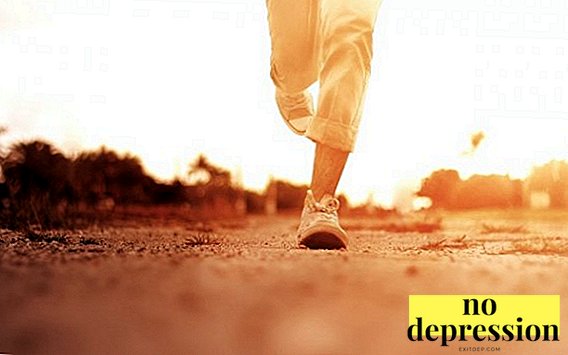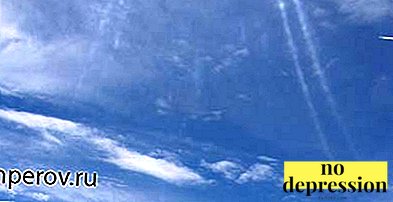With the help of relaxation, you can remove the nervous and physical strain, improve the efficiency of the person. But how is this effect achieved? What relaxation techniques are there? Are they all equally effective? How difficult is it to master different ways of relaxation? How long does it take, are there any express methods? What does that require? Is it possible to master relaxation techniques by yourself? We analyze effective techniques.
What is the meaning of relaxation?
The human skeletal musculature should not always be under stress. This is fraught with destructive processes, stress and a decrease in efficiency. A pathological condition known as hypertonia is known when the muscles cannot fully relax. To prevent this, people relax and relax, unloading their muscles, restoring their energy potential.
Relaxation techniques
Muscle relaxation can be achieved in many ways. It is customary to distinguish three main groups that combine the existing relaxation techniques. The first group includes all methods based on the use of special drugs. In the second - physiotherapeutic techniques. In the third - methods of psychological control of all physiological processes. The first two groups require the participation of a specialist and various devices, which significantly complicates their implementation. Therefore, we consider the most convenient ways of relaxation, based on the characteristics of human psychology. These include relaxation exercises associated with all sorts of breathing techniques, self-hypnosis and the ability to control your own body.
Breathing exercises
As many athletes will say - first of all breathing. With it, you can slow down the heartbeat, calm your thoughts, relax the muscles that are necessary for relaxation. To do this, you should master abdominal (abdominal) breathing. It allows not only to normalize the work of muscles, but also to get rid of nervous tension. The fact is that during stress the muscles of the walls of the abdominal cavity tense noticeably, starting to squeeze the diaphragm. From this there is a feeling of suffocation. Breath and heartbeat is accelerated. If you learn to control the abdominal muscles, you can avoid panic. The technique of performing abdominal breathing is as follows:
- Take a comfortable posture (preferably sit or lie down);
- Relax the muscles of the shoulder girdle;
- Take a deep breath through the nose;
- Feel the belly begin to expand, as if the air goes straight into it;
- With the help of abdominal muscles to exhale, while not straining the chest.
Inhale and exhale should be performed slowly and evenly to achieve a state of relaxation. When the diaphragm is released from compression, it will be possible to normalize breathing and calm down.
Self hypnosis
The original form of relaxation, which absolutely does not require the adoption of special postures or solitude in any place. It is enough to learn how to “inspire” the necessary information to your body. For example, in the case of squeezing the muscles of the arm, it is enough just to “command” them to relax. From the first time it may not be possible, but with regular attempts success is ensured. Many relaxation methods are based on the ability of the psyche to influence the course of physiological processes. The main thing to believe in it and the body itself will begin to obey.
Relaxation with visualization
The first step towards self-hypnosis can be considered visualization. This relaxation technique is based on the reflexes of the body. According to the principle of Pavlov's doggie, which was fed in response to a lit light bulb. With a certain training, she began to produce gastric juice when you turn on this very light bulb, even without the appearance of food. Also, the human brain is able to generate a signal of relaxation, if you mentally imagine it. For example, a person relaxes on the seashore, under a light breeze and the soothing sound of the surf. If you mentally transfer yourself to such a situation, the psyche is able to act on the muscles, forcing them to relax.
Progressive muscle relaxation
The technique developed by the American doctor Edmund Jacobson in the first half of the last century. Its essence lies in the assertion that the muscles necessarily relax after a strong tension. Accordingly, in order to relax a muscle, it is necessary to prestress it beforehand. If the creator of this relaxation method initially introduced about 200 exercises for all muscle groups, now 16 versions are distributed. These relaxation exercises are performed in a sequence from dominant body parts to non-dominant parts. Under the dominant means the right parts of the body - for right-handers, and the left - for left-handers.
- Hand and forearm that are dominant;
- The shoulder of the same hand;
- Brush and forearm that are not dominant;
- Non-dominant shoulder;
- Upper face (eyebrows);
- The middle part of the face (nose);
- Lower part of the face (jaw);
- Neck muscles;
- Pectoral muscles and diaphragm;
- Muscles of the abdomen and back;
- Hip dominant legs;
- Dominant calf;
- Foot dominant legs;
- The hip of the other leg;
- Non-dominant calf;
- Foot non-dominant legs.
Consistently straining and relaxing the muscles can be achieved their deep relaxation. Exercises should be performed in a completely relaxed state, preferably lying on a flat surface.
Relaxation with a conditional signal
This relaxation technique is based on breathing exercises and self-hypnosis. She - a kind of self-hypnosis, or rather the programming itself. When you inhale, you should mentally tell yourself to "inhale", and when you exhale - "relax." It turns out that the process of breathing itself turns into a stimulus for relaxation. Gradually, relaxation begins so firmly to be associated in the subconscious with an exhalation that relaxation occurs almost instantly. It is best to supplement this effect with the visualization of your breathing. Imagine how, with each exhalation, the negative comes out of the body, taking with it overvoltage and stress.
These relaxation techniques are quite simple to use and can be used in any setting. In order to learn how to perform them, a mentor is not needed. Everything can be done independently. We did not specifically indicate more complex relaxation techniques, since these are sufficient for a full recovery. It is not necessary to apply them all. You can choose one that fits more than others. All relaxation methods are based on common principles and can differ only in the technique of their execution.



